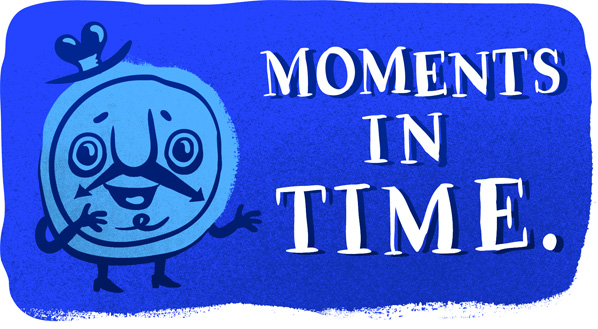Our city has a history. Sure, it’s not especially long or hugely interesting history – but it has its moments. These are them.
Moments in time #7 – On the rails
In mid-1955, the city of Melbourne in the magical land of Victoria was faced with a monumental decision. It was a decision that would determine the fates of every Victorian for generations to come: should we keep the trams or not?
In that city, as in cities all over Australia following World War II, the rise of John P. Motorcar and his beloved personal automobile had significantly reduced the demand for public transport. This was the go-go 1950s, and people no longer wanted to move to the beat of “the man’s” drum; they wanted to travel where they wanted when they wanted, and they wanted to do so in all the style and luxury that their metal brick deathtrap automobiles had to offer.
Yes, by 1955 the writing had appeared on the metaphorical wall, and the content of said writing was clear to all those who were literate and in possession of functioning eyes: the days of tram travel were numbered.
But the wise and brave Melbourne officials could see over said metaphorical wall and further down the metaphorical street, and what they glimpsed was this: that as the city became more and more congested with car traffic, the tram would ultimately re-emerge as the best way for people to move themselves around. And so, instead of scrapping light rail, Melbourne doubled down on it – replacing the Bourke Street bus services with trams, and laying down new lines to East Preston and East Brunswick.
At the same time, partway across the country in a mirror universe known as Adelaide, town planners were facing an identical predicament to their Melbournian counterparts. Since the late 1940s, usage of motorcars in Adelaide had skyrocketed, and this had functioned not only to drain customers away from the tram network, but also ironically to make street-level tram commuting more dangerous.
This was a shame, because for the first half of the 20th century Adelaide’s tram infrastructure had been like something out of a tram-lover’s dirtiest (tram-related) fantasy. The tendrils of the light rail network stretched far and wide, and could deliver a customer to a milkshake bar anywhere within a 10km radius of the CBD. Tram lines ran all the way to Henley Beach, Port Adelaide, Kilburn, Magill, Burnside and Mitcham, at a time when most of those locations appeared in street directories underneath a drawing of a sea serpent.
However, by the 1950s, nobody was left riding this extensive network. And so the question was posed, presumably during a séance in which Colonel Light’s opinion was sought: should Adelaide keep the trams or not? Before anyone could even finish saying the phrase “my word no”, kilometres of unsightly, invasive tram tracks had been ripped out of the ground in order to make room for vast stretches of glorious dual carriageway. (In what we can only imagine was a monumental clerical error, the decision was made to retain the Adelaide to Glenelg line.)
Fifteen years later, in 1970, Melbourne was the only city in Australia to still have a major tram network. Fortunately for us, though, history was on Adelaide’s side, and today nobody has ever heard of the Melbourne tram network and it is scarcely used by any member of that city. Now let’s all celebrate with a cool glass of turnip juice.





